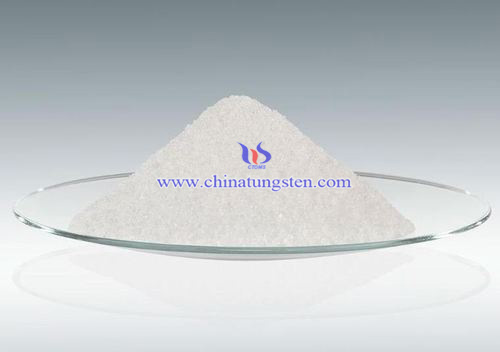Thermal and Mechanochemical Decomposition of Ammonium Paratungstate (APT)
- Details
- Category: Tungsten Information
- Published on Monday, 04 May 2020 02:33
Ammonium paratungstate (APT) is the general starting material used in the manufacturing of tungsten products. For instance, tungsten trioxide (WO3) is obtained by thermal decomposition of APT. WO3 has been applied as catalysts, it is also a common starting material for preparation of tungsten metal powder. The application fields of tungsten metal powder include lightings, electronics, and high-temperature materials.
Thermal decomposition behavior of APT for preparation of WO3 have been investigated widely. Generally decomposition completes at temperature up to about 380 °C with H2O and NH3. It might be possible that decomposition reaction takes place during high energy ball milling due to mechanical energy. In fact, thermal energy which is used for decomposition can be replaced by mechanical energy. This has been referred as mechanochemical decomposition (MCD). During the mechanical milling, collisions between balls or ball and inner wall of mill container exert an extremely high stress (several GPa) on powder caught between them. This stress could deform the structure and break some of chemical bonds, and finally decompose the materials. Many MCD systems have been reported up to now.

In order to compare thermal and mechanochemical decomposition of ammonium paratungstate, the following process was conducted:
Ammonium paratungstate (99% purity) was used as a raw material. In order to evaluate the possibility of mechanochemical decomposition, 5 g of APT was milled in high energy planetary ball mill at room temperature. The weight ratio of the steel balls to the powder (BPR) was kept 40:1, and rotation speed was 300 rpm. Mechanical milling was performed under air atmosphere at different times. 5 CC hexane was used as processing control agent (PCA). For thermal decomposition, APT was heated in conventional electric furnace at 300 and 450 °C for 30 minutes in air atmosphere. The thickness of powder layer was 2 mm. The decomposition progress was characterized by X-ray diffractometry (XRD) with Cu Kα radiation (λ=0.15406 nm). The XRD patterns were recorded in the 2θ range of 5–60° with 0.02° step size, and 1 s time per step.
Thermo gravimetric analyzer and differential scanning calorimeter with the rate of 10 °C/min under air atmosphere were used for studying the decomposition steps of APT.
In conlusion, thermal and mechanochemical modes of APT decomposition were compared in this research. XRD and TGA results showed that APT completely decomposes to WO3 during thermal decomposition in the air, while the product of mechanochemical decomposition is WO3 (H2O)0.5. During mechanical milling crystal water and ammonia liberate from APT, and WO3 (H2O)0.5 crystallizes from X-ray amorphous phase. The milling energy is not enough for liberating the structural water, and it needs high temperatures (above 400 °C) for complete decomposition.
- APT Manufacturer & Supplier, Chinatungsten Online: ammonium-paratungstate.com
- Tungsten News & Prices of China Tungsten Industry Association: www.ctia.com.cn
- Molybdenum News & Price: news.molybdenum.com.cn
- Tel.: 86 592 5129696; Fax: 86 592 5129797; Email: sales@chinatungsten.com



 sales@chinatungsten.com
sales@chinatungsten.com